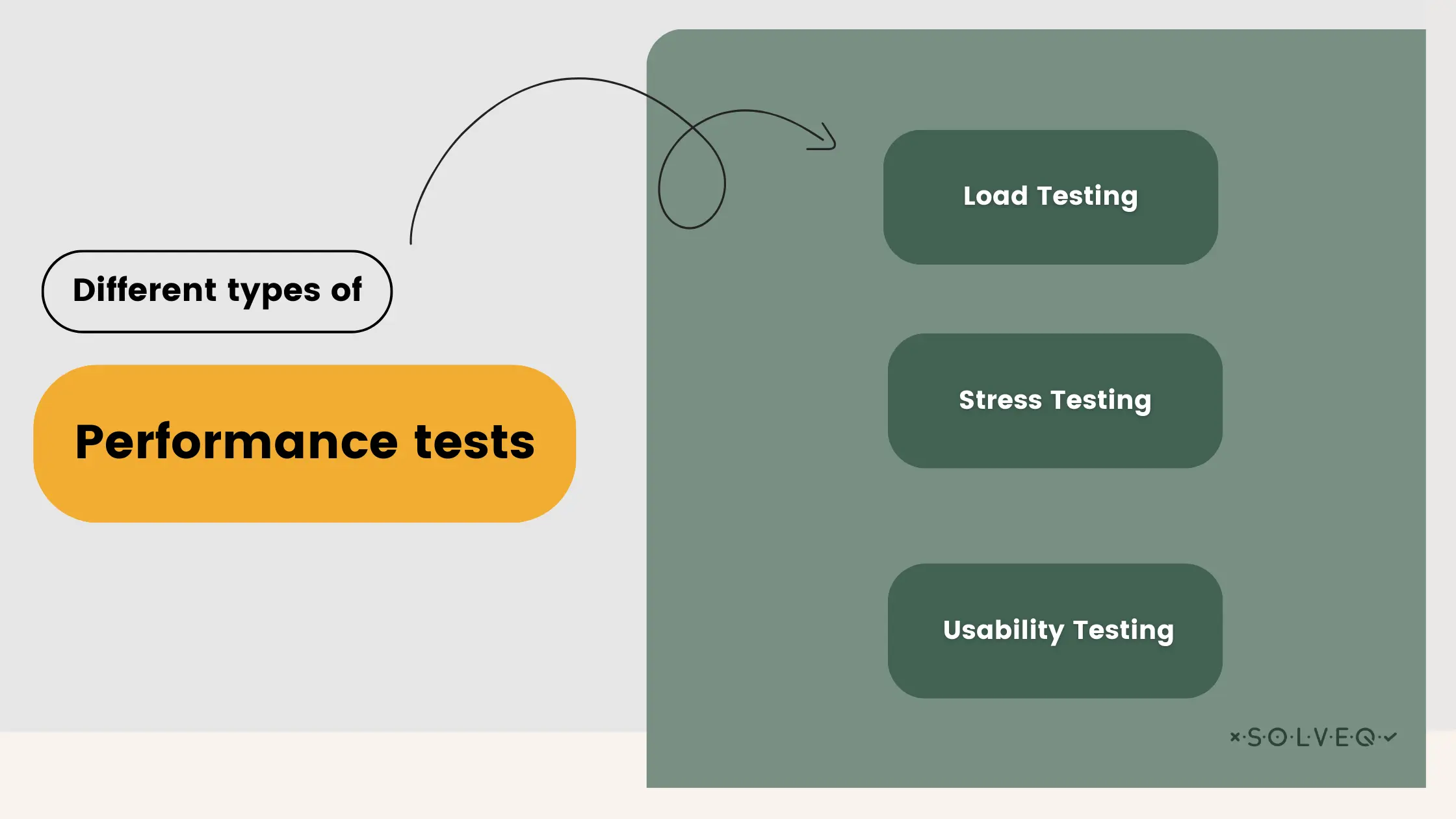Performance issues in mobile cross-platform development
25 Jan 2024 • 18 min read

Marcin Kulawik

Addressing performance and memory issues is pivotal in cross-platform mobile app development, where frameworks like React Native and Flutter are prevalent. Balancing efficiency with robust performance remains a key challenge. Dive into this article for insights on optimizing cross-platform apps, a crucial read for navigating these complex yet essential aspects of app development.
The Cross-Platform Development Landscape
Cross-platform development's ascent in popularity is a direct response to the diverse ecosystem of mobile devices. The contemporary digital landscape, dotted with an array of smartphones each running distinct versions of multiple operating systems, poses a significant challenge in achieving widespread market penetration. Cross-platform development elegantly surmounts this hurdle by enabling the deployment of a unified application across multiple platforms, thereby avoiding the intricacies of managing multiple codebases. This is particularly advantageous in today's digital-centric business world, where an expansive digital presence is critical for market impact.
Transitioning into the advantages and drawbacks of this approach, we observe:
Pros:
- Reduced Development Time and Costs: Developing a single application for multiple platforms significantly cuts down on development time and expenses, offering a more economical alternative to native app development.
- Broader Market Reach: By catering to various platforms simultaneously, businesses can target a wider audience, enhancing market penetration and presence.
Cons:
- Potential Performance Limitations: Cross-platform apps may not fully exploit each operating system's unique features and optimizations, potentially leading to less fluid and responsive user experiences compared to native apps.
- Integration and Consistency Challenges: Ensuring a uniform and seamless user experience across diverse devices and platforms can be challenging, given the variations in screen sizes, hardware specifications, and operating system functionalities.
In essence, while cross-platform development is lauded for its cost-effectiveness and efficiency in reaching a broader market, it is imperative for businesses to consider the potential compromises in performance and user experience. A nuanced understanding of these trade-offs is vital for determining whether cross-platform development is congruent with the specific objectives and requisites of their mobile app endeavor.
Performance and Memory Challenges in Cross-Platform Development
In cross-platform development, performance and memory consumption are critical areas of concern. These challenges stem from the additional abstraction layer that frameworks use to ensure compatibility across different operating systems. This layer can lead to increased memory usage, which, in turn, might slow down app performance. Users may experience longer load times, reduced responsiveness, or even crashes, especially on devices with limited resources.
Memory leaks are another significant issue. These occur when the app doesn't release unused memory, causing it to consume more resources over time. Diagnosing and fixing these leaks requires an in-depth understanding of the cross-platform framework and the native platforms.

Frameworks Comparison
Let's briefly compare how popular frameworks - Flutter, Xamarin, and React Native - handle memory management and performance:
- Flutter: Known for its high-performance rendering engine, Flutter compiles directly into native ARM code, offering near-native performance. Its downside is a larger app size, impacting memory usage for simpler applications.
- Xamarin: This Microsoft-backed framework uses C# for cross-platform development and provides access to native APIs. It can deliver performance close to native apps but requires careful memory management to avoid leaks, especially with complex data structures.
- React Native: Balancing between performance and development efficiency, React Native uses JavaScript and React. While it performs well in most scenarios, it can struggle with memory management in cases involving extensive animations or heavy native module integration.
In summary, each framework has its unique approach to memory management and performance optimization. Understanding these aspects is crucial for developers and businesses to choose the right framework that meets their specific performance and user experience needs.
Design and Development Strategies for Cross-Platform Apps
In the realm of cross-platform app development, adopting the right design and development strategies is pivotal for achieving optimal performance and user experience.
Optimizing Code for Each Platform
One of the key strategies is to optimize the application’s code for each platform. This involves tweaking the shared codebase to better suit the individual characteristics and performance expectations of each operating system. It ensures that the app not only functions across multiple platforms but also delivers a smooth and responsive user experience that feels native to each platform.
Testing with Third-Party Services
Another crucial aspect is rigorously testing all third-party services and APIs for compatibility with each platform. This step is essential to identify and resolve any discrepancies that might affect performance or cause unexpected behaviour in the app.
Framework Selection
Choosing the right framework plays a significant role in the app’s performance and development efficiency. Let's briefly look at how selecting Flutter, Xamarin, or React Native can impact your project:
- Flutter: Ideal for high-performance UIs and animations, Flutter is a good choice if the visual experience is a priority. However, the larger app size might be a consideration for simpler applications.
- Xamarin: Best suited for apps that require close integration with native platform features. It demands careful memory management but offers a balance between performance and native API access.
- React Native: A great option for projects that can leverage web development expertise, React Native strikes a balance between performance and rapid development. It’s particularly suitable for applications with a moderate level of complexity in terms of UI and functionality.
In conclusion, effectively managing performance and memory issues in cross-platform development hinges on a combination of careful code optimization, rigorous testing, and a strategic choice of the development framework. Each of these aspects contributes to creating a robust, efficient, and user-friendly cross-platform app.
Performance Testing and Tools
An integral part of optimizing cross-platform mobile apps is rigorous performance testing. This process helps in identifying potential bottlenecks that could impair the app's functionality and user experience. Different types of performance tests include:

- Load Testing: This tests the app's ability to handle heavy loads, such as many users accessing the app simultaneously, ensuring it doesn't crash under pressure.
- Stress Testing: Here, the app is tested under extreme conditions, like high traffic or data processing, to check its threshold and how it recovers from such states.
- Usability Testing: This focuses on the user experience, ensuring the app is intuitive and easy to navigate, even when it's functioning at its peak capacity.
Each of these tests provides valuable insights into different aspects of the app's performance and helps in fine-tuning it for optimal operation across various platforms.
Performance Testing Tools
Choosing the right tools is crucial for effective performance testing. Some popular tools include:
- LoadRunner: Widely used for its robust performance testing capabilities, especially in simulating thousands of users.
- Apache JMeter: An open-source tool, great for load and performance testing with support for various protocols.
- Neotys: Known for its advanced performance testing solutions for mobile and web applications.
- BlazeMeter: Offers cloud-based load testing with strong analytics capabilities for monitoring multi-platform app performance.
Each of these tools has unique features that cater to different testing requirements. The choice of tool should align with the specific performance testing needs of the app.
In essence, performance testing is a non-negotiable part of the cross-platform development process. It ensures that the app not only functions as intended but also delivers a consistent, high-quality user experience across all targeted platforms. Selecting appropriate testing tools further enhances the process, enabling developers to identify and resolve issues efficiently.
Native vs. Cross-Platform Development
In the landscape of mobile app development, a key decision for developers and businesses is choosing between native and cross-platform development. This choice can significantly impact the app’s performance, user experience, and overall development trajectory. To help you make a better and more informed choice we can provide you with the pros and cons of each solution.
Native App Development
Tailored for specific operating systems, native app development focuses on delivering an optimized and high-quality user experience, fully utilizing the capabilities of the device's hardware and software. Its advantages and disadvantages are:
Pros:
- Optimized Performance: Native apps are developed specifically for one platform, leading to optimized performance and a smoother user experience.
- Full Feature Access: They have complete access to device hardware and software, allowing fuller utilization of platform-specific features.
- Reliability: Generally more stable and reliable due to their direct integration with the operating system.
Cons:
- Higher Costs and Time: Developing separate apps for each platform (iOS, Android) can be time-consuming and expensive.
- Resource Intensive: Requires more resources in terms of development and maintenance.
Cross-Platform Development:
Aiming for broad reach and efficiency, cross-platform development uses one codebase to create apps that run across multiple platforms, such as iOS and Android, balancing development efficiency with market accessibility. Its main positives and negatives are:
Pros:
- Cost-Effective and Efficient: Enables development for multiple platforms using one codebase, reducing development time and costs.
- Broader Reach: Easier to reach a wider audience across different platforms with a single app.
- Faster Deployment: Quicker to market due to the shared codebase and development process.
Cons:
- Performance Trade-offs: May not fully exploit the native capabilities of each platform, leading to potential compromises in app performance.
- Limited Access to Native Features: Might not provide as deep access to device-specific features and functionalities.
In summary, the choice between native and cross-platform development hinges on factors like the app’s intended functionality, target audience, budget, and time constraints. Native development offers high performance and full feature utilization but at a higher cost and resource requirement. In contrast, cross-platform development offers efficiency and broader market reach but might involve some trade-offs in performance and feature access. The decision should align with the project's goals, resources, and long-term strategy.
Case Studies and Real-World Examples
In this section, we delve into real-world examples and case studies, illustrating how different approaches in cross-platform development have been implemented successfully.
Case Studies in Cross-Platform Development
- Walmart (React Native): Walmart's transition to React Native for their iOS and Android apps is a notable example of cross-platform success. By adopting React Native, they managed to share over 95% of their codebase across platforms. This strategic move not only accelerated their feature development process but also reduced the total codebase size significantly while enhancing stability and user experience.
- Groupon (Flutter): Groupon's migration from native apps to Flutter showcases the efficiency of Flutter in cross-platform development. This change resulted in a 5x increase in developer productivity, with build and test times dropping from minutes to mere seconds. The platform-specific code was dramatically reduced from 50% to just 5%, enabling the team to focus more on business logic than on maintaining separate codebases for different platforms.
- Call of Duty Companion App (Xamarin): Activision utilized Xamarin to develop the Call of Duty companion apps. Xamarin's framework allowed them to deliver a consistent experience across iOS, Android, and Windows platforms, maximizing code reuse. This case study highlights Xamarin's ability to maintain platform-specific functionality while sharing a significant portion of the code.
Lessons Learned
These case studies demonstrate the diverse approaches and outcomes in cross-platform development, emphasizing the importance of choosing the right framework based on the project's specific requirements. Walmart's experience with React Native illustrates the benefits of code reuse and faster development, Groupon's switch to Flutter highlights improvements in development efficiency, and Activision's use of Xamarin showcases the advantages of maintaining native functionalities across different platforms. Each of these examples provides insights into how businesses can leverage cross-platform development to meet their strategic goals effectively.
Conclusion and Future Outlook
As we wrap up our exploration of cross-platform mobile app development, it's clear that this approach offers a unique blend of efficiency, reach, and adaptability that is invaluable in today's fast-paced digital world. The key takeaways from our discussion include the importance of understanding the specific challenges and benefits of cross-platform development, the nuances of selecting the right framework, and learning from real-world applications.

Key Conclusions:
- Framework Choice is Crucial: The decision between frameworks like React Native, Flutter, and Xamarin depends on various factors including the project requirements, team expertise, and desired app performance and features.
- Performance and Memory Management: These remain critical considerations in cross-platform development. Efficient memory usage and optimizing performance are essential for a smooth user experience
- Real-World Applications: Case studies from companies like Walmart, Groupon, and Activision demonstrate the practical benefits and challenges of cross-platform development, offering valuable insights for businesses planning their app strategies.
Looking Ahead:
The future of cross-platform development seems promising and dynamic. We're likely to see:

- Continued Evolution of Frameworks: Frameworks will continue to evolve, offering more robust features, better performance, and easier integration with native capabilities.
- Emergence of New Technologies: Emerging technologies like AI, machine learning, and more advanced UI/UX design tools will further enhance the capabilities of cross-platform apps.
- Greater Focus on User Experience: As competition intensifies, the emphasis on creating seamless, intuitive, and engaging user experiences will grow stronger.
- Increased Adoption in Various Industries: With its cost-effective and efficient nature, more industries will adopt cross-platform development for their mobile app needs.
In conclusion, cross-platform mobile app development stands as a compelling option for many businesses, balancing the benefits of cost-effectiveness, quicker time-to-market, and broad reach, with some trade-offs in performance and native feature integration. As technology continues to advance, the capabilities and applications of cross-platform solutions are only expected to broaden, opening new doors for innovation and connectivity in the mobile app domain.
Summary
Diving into the world of cross-platform mobile app development reveals a landscape rich with opportunities and challenges. Choosing the right framework, whether it's React Native, Flutter, or Xamarin, is more than a technical decision; it shapes user experiences and impacts business outcomes. This journey through the nuances of cross-platform development uncovers key insights for balancing performance, user engagement, and efficient development.
Thinking of exploring the potential of cross-platform apps for your business? Reach out, and let's strategize the best path forward for your unique goals.
Share:
Looking for expert development team?
Schedule a call with Tech Consultant

Marcin Kulawik
Founder and CEO of SolveQ. Huge fan of building things with purpose, agility, and having fun while changing the World. Loves his family, teammates, and nature.